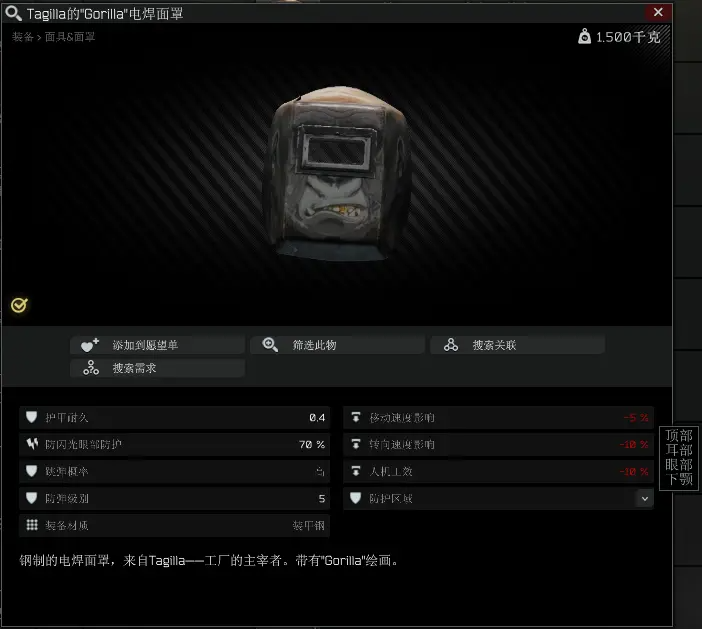主页 > imtoken国际版 > 以太坊源码分析之共识算法ethash
以太坊源码分析之共识算法ethash
区块链是作为分布式系统构建的,由于不依赖于中央权威,分散的节点需要就交易是否有效达成一致,而达成一致的机制就是共识算法。
以太坊目前的算法是一种类 POW 算法:ethash。 除了像比特币一样需要消耗计算机资源进行计算外,还考虑了对专用矿机的抵抗力,增加了挖矿的公平性。
通用 POW 算法思路
POW即Proof of Work,就是通过工作的结果证明你已经完成了相应的工作。
其初衷是人人可参与以太坊公认共识端,门槛低(容易验证),但出结果难(计算复杂)。 在这一点上,只匹配部分特征的哈希算法(不可逆)就非常适合。
哈希值是通过不断改变随机数得到的,比较是否小于给定的值(难度),匹配的就是合适的结果。
随机数一般来自区块头结构中的nonce域。
因为出块时间是一定的,但是整体算力是不确定的,所以难度一般是根据时间来调整的。
ethash算法的思想
Ethash 类似于 pow。 数据来源不仅像比特币一样来自header structure和nonce,还有自己的一套数据集。
简化后的核心代码如下:
func (ethash *Ethash) mine(block *types.Block, id int, seed uint64, abort chan struct{}, found chan *types.Block) {
var (
header = block.Header()
hash = ethash.SealHash(header).Bytes()
target = new(big.Int).Div(two256, header.Difficulty)
number = header.Number.Uint64()
dataset = ethash.dataset(number, false)
)
var (
attempts = int64(0)
nonce = seed
)
for {
attempts++
digest, result := hashimotoFull(dataset.dataset, hash, nonce)
if new(big.Int).SetBytes(result).Cmp(target) <= 0 {
// Correct nonce found, create a new header with it
header = types.CopyHeader(header)
header.Nonce = types.EncodeNonce(nonce)
header.MixDigest = common.BytesToHash(digest)
...
}
...
}
...
}
for i := 0; i < threads; i++ {
pend.Add(1)
go func(id int, nonce uint64) {
defer pend.Done()
ethash.mine(block, id, nonce, abort, locals)
}(i, uint64(ethash.rand.Int63()))
}
miner方法中,hashimotoFull返回result,result seed-->cache-->dataset,生成一致的结果。
图片.png
从这个图中可以看出,无论是挖矿节点还是验证节点(全规模验证),生成数据集调用的方法是一样的,参数个数块高是一样的,所以数据集也是一样(参数async在这里不影响以太坊公认共识端,如果为true,数据集会在后台生成)。
桥本
Hashimoto 聚合数据集、块头哈希和随机数以生成最终值。
图片来自简书App
如图所示:
桥本全功能
func hashimotoFull(dataset []uint32, hash []byte, nonce uint64) ([]byte, []byte) {
lookup := func(index uint32) []uint32 {
offset := index * hashWords
return dataset[offset : offset+hashWords]
}
return hashimoto(hash, nonce, uint64(len(dataset))*4, lookup)
}
hashtoLight 函数
func hashimotoLight(size uint64, cache []uint32, hash []byte, nonce uint64) ([]byte, []byte) {
keccak512 := makeHasher(sha3.NewLegacyKeccak512())
lookup := func(index uint32) []uint32 {
rawData := generateDatasetItem(cache, index, keccak512)
data := make([]uint32, len(rawData)/4)
for i := 0; i < len(data); i++ {
data[i] = binary.LittleEndian.Uint32(rawData[i*4:])
}
return data
}
return hashimoto(hash, nonce, size, lookup)
}
桥本函数:多次聚合header hash、nonce、dataset,得到最终的取值结果
func hashimoto(hash []byte, nonce uint64, size uint64, lookup func(index uint32) []uint32) ([]byte, []byte) {
// Calculate the number of theoretical rows (we use one buffer nonetheless)
rows := uint32(size / mixBytes)
// Combine header+nonce into a 64 byte seed
seed := make([]byte, 40)
copy(seed, hash)
binary.LittleEndian.PutUint64(seed[32:], nonce)
seed = crypto.Keccak512(seed)
seedHead := binary.LittleEndian.Uint32(seed)
// Start the mix with replicated seed
mix := make([]uint32, mixBytes/4)
for i := 0; i < len(mix); i++ {
mix[i] = binary.LittleEndian.Uint32(seed[i*4:])
}
// Mix in random dataset nodes
temp := make([]uint32, len(mix))
for i := 0; i < loopAccesses; i++ {
parent := fnv(uint32(i)^seedHead, mix[i%len(mix)]) % rows
for j := uint32(0); j < mixBytes/hashBytes; j++ {
copy(temp[j*hashWords:], lookup(2*parent+j))
}
fnvHash(mix, temp)
}
// Compress mix
for i := 0; i < len(mix); i += 4 {
mix[i/4] = fnv(fnv(fnv(mix[i], mix[i+1]), mix[i+2]), mix[i+3])
}
mix = mix[:len(mix)/4]
digest := make([]byte, common.HashLength)
for i, val := range mix {
binary.LittleEndian.PutUint32(digest[i*4:], val)
}
return digest, crypto.Keccak256(append(seed, digest...))
}
consensus\ethash\algorithm.go中的generateCache、generateDataset、generateDatasetItem、hashimoto函数,这里只提供一个大概的思路,不去深究,因为涉及到一些密码算法,我自己看不懂代码。 另外,这部分细节对整体理解ethash算法影响不大。 以后还是分析密码算法比较好。
困难
func CalcDifficulty(config *params.ChainConfig, time uint64, parent *types.Header) *big.Int {
next := new(big.Int).Add(parent.Number, big1)
switch {
case config.IsConstantinople(next):
return calcDifficultyConstantinople(time, parent)
case config.IsByzantium(next):
return calcDifficultyByzantium(time, parent)
case config.IsHomestead(next):
return calcDifficultyHomestead(time, parent)
default:
return calcDifficultyFrontier(time, parent)
}
}
以太坊的难度分多个阶段调整,根据区块高度的阶段使用该阶段的计算公式。 由于目前处于君士坦丁堡阶段,因此仅描述代码。
计算君士坦丁堡难度的函数是makeDifficultyCalculator。 由于评论里已经有对应的公式,代码就不贴了。 梳理如下:
step = parent_diff // 2048
direction = max((2 if len(parent.uncles) else 1) - ((timestamp - parent.timestamp) // 9), -99)
periodCount = (block.number - (5000000-1)) if (block.number >= (5000000-1)) else 0
diff = parent_diff + step *direction+ 2^(periodCount - 2)
diffculty计算分为两部分: 1.动态线性调整:parent_diff + step *direction
这部分难度值是在父块的基础上微调的。 调整单位为step,根据当前块与父块的时间间隔,是否有叔块得到一个单位调整范围方向。 step *direction 为调整值。
也就是说,时间间隔太小,方向为正,难度会增加一点,间隔太小,难度会降低一点。 为了防止一直产生叔块,会延长时间,增加难度。 如果出现意外情况或程序出现漏洞,难度大大降低,并有最低门槛(-99)。
值得注意的是,parent_diff + step *direction 除了方向有最小阈值外,还有一个最小难度。
// minimum difficulty can ever be (before exponential factor)
if x.Cmp(params.MinimumDifficulty) < 0 {
x.Set(params.MinimumDifficulty)
}
MinimumDifficulty = big.NewInt(131072) // The minimum that the difficulty may ever be.
2. 指数增长:2^(periodCount - 2)
指数增长部分在以太坊中被称为难度炸弹(也称为冰河时代)。 由于以太坊的共识算法会从pow过渡到pos,设计难度炸弹会使挖矿难度越来越大,以至于无法出块。 这样矿工就有了期待,和平过渡到pos。
目前在君士坦丁堡阶段,periodCount减去数字5,000,000是为了防止指数部分增长过快,即延迟难度炸弹生效。
关于header.difficulty的具体难度分析,这篇文章分析的很好。
试验结果
我本地私链当前区块高度为2278,配置的君士坦丁堡起始高度为5,即进入君士坦丁堡阶段。
刚开始程序挖矿的时候,因为没有其他节点挖矿,最后一个出块时间和当前出块时间的间隔相差很大,方向设置为-99。 但是区块高度不超过5000000,索引部分结果为0,父难度为689054,最终难度为655790。
图片.png
一段时间后,方向基本徘徊在-1、0、1之间,平均挖矿间隔只有十几秒。
图片.png
INFO [06-09|17:49:46.059] luopeng2 block_timestamp - parent_timestamp=25
INFO [06-09|17:49:53.529] luopeng2 block_timestamp - parent_timestamp=7
INFO [06-09|17:51:19.667] luopeng2 block_timestamp - parent_timestamp=18
INFO [06-09|17:51:23.387] luopeng2 block_timestamp - parent_timestamp=4
INFO [06-09|18:46:02.608] luopeng2 block_timestamp - parent_timestamp=31
INFO [06-09|18:46:18.575] luopeng2 block_timestamp - parent_timestamp=1
目前以太坊网络状态正常,算力稳定,ethgasstation
网站上查到的时间间隔和我当地的情况差不多
图片.png
总结
综上所述,ethash的基本思想类似于比特币的pow,就是比较随机nonce得到的值和难度。 如果条件满足则挖矿成功,否则继续尝试。 与比特币竞争CPU算力不同,ethash通过生成庞大的数据集和限制内存来增强去中心化,防止ASIC矿机强势算力的垄断。
参考







